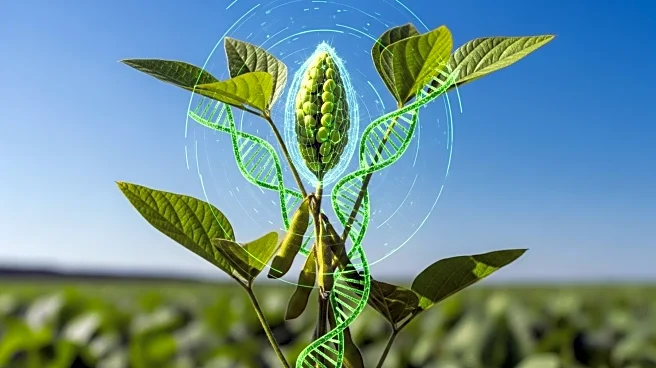What's Happening?
Syngenta, in collaboration with M.S. Technologies, has unveiled a new generation of soybean traits featuring HPPD inhibitor tolerance. This development aims to address the growing issue of weed resistance, particularly against pigweed, waterhemp, and kochia, which have adapted to existing chemical treatments. The new soybean trait will allow for the use of a broader range of HPPD inhibitor chemistries, such as mesotrione, isoxaflutole, and bicyclopyrone, alongside the existing Enlist E3 technology. This innovation is expected to provide farmers with greater flexibility in managing early-season weed control, especially in scenarios involving planting delays or seed changes. Syngenta plans to introduce these traits in 2028, with full commercial availability anticipated by 2029, pending regulatory approval.
Why It's Important?
The introduction of HPPD-tolerant soybeans is significant for the agricultural sector, particularly in the U.S., where resistant weeds pose a substantial challenge to crop yields and farm profitability. By expanding the range of effective herbicides, this technology could reduce the reliance on a limited set of chemical treatments, thereby mitigating the risk of further resistance development. This advancement not only promises to enhance weed management strategies but also supports sustainable agricultural practices by potentially reducing the volume of herbicides needed. Farmers stand to benefit from improved crop protection and potentially higher yields, while the agricultural industry could see a shift in market dynamics as new herbicide-tolerant traits become available.
What's Next?
Syngenta's next steps involve securing regulatory approvals to ensure the new soybean traits can be marketed and used by farmers. The company will likely engage with agricultural stakeholders, including farmers and industry groups, to demonstrate the benefits and safety of the new technology. As the 2028 introduction date approaches, Syngenta will also need to ramp up production and distribution plans to meet anticipated demand. Additionally, the agricultural community will be watching closely to see how these new traits perform in real-world conditions and whether they deliver on the promise of improved weed control.











